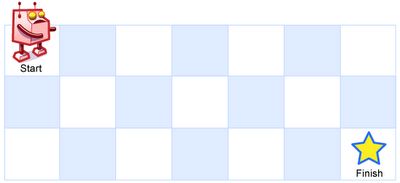Leetcode | Unique Paths I & II
A robot is located at the top-left corner of a m x n grid (marked 'Start' in the diagram below).
The robot can only move either down or right at any point in time. The robot is trying to reach the bottom-right corner of the grid (marked 'Finish' in the diagram below).
How many possible unique paths are there?

前面有摘过Unique Path I的解法。n天之后我自己又重写一遍,如下。看来自己的算法能力还是有长进的。
1 class Solution { 2 public: 3 int uniquePaths(int m, int n) { 4 vector<int> dp(n + 1, 0); 5 dp[n] = 1; 6 for (int i = m - 1; i >= 0; --i) { 7 for (int j = n - 1; j >= 0; --j) { 8 dp[j] += dp[j + 1]; 9 } 10 dp[n] = 0; 11 } 12 13 return dp[0]; 14 } 15 };
用一维的dp去优化二维的话,记得每个位置的初始值。这里最边边dp[n]每次都记得还原到0;(第10行)
Unique Paths II
Follow up for "Unique Paths":
Now consider if some obstacles are added to the grids. How many unique paths would there be?
An obstacle and empty space is marked as 1 and 0 respectively in the grid.
For example,
There is one obstacle in the middle of a 3x3 grid as illustrated below.
[
[0,0,0],
[0,1,0],
[0,0,0]
]
The total number of unique paths is 2.
代码差不多,这个只要有障碍的时候,那个位置设置为0就行了。
1 class Solution { 2 public: 3 int uniquePathsWithObstacles(vector<vector<int> > &obstacleGrid) { 4 int m = obstacleGrid.size(); 5 if (m <= 0) return 0; 6 int n = obstacleGrid[0].size(); 7 if (n <= 0) return 0; 8 9 vector<int> dp(n + 1, 0); 10 dp[n] = 1; 11 for (int i = m - 1; i >= 0; --i) { 12 for (int j = n - 1; j >= 0; --j) { 13 if (obstacleGrid[i][j] == 1) dp[j] = 0; 14 else dp[j] += dp[j + 1]; 15 } 16 dp[n] = 0; 17 } 18 19 return dp[0]; 20 } 21 };